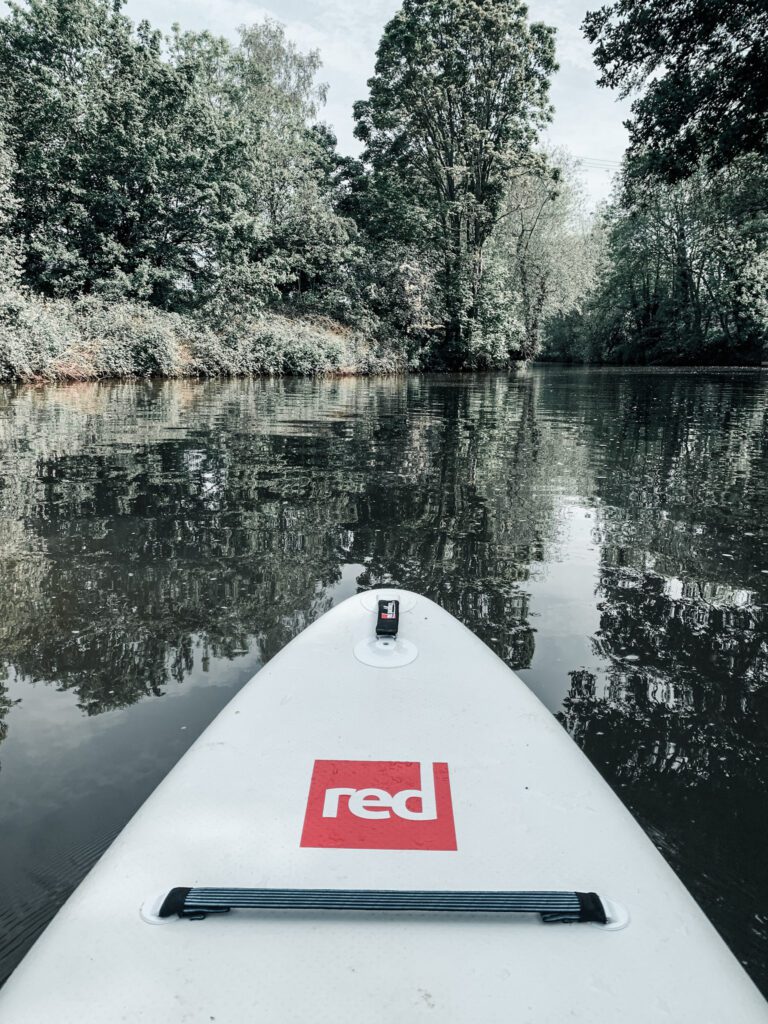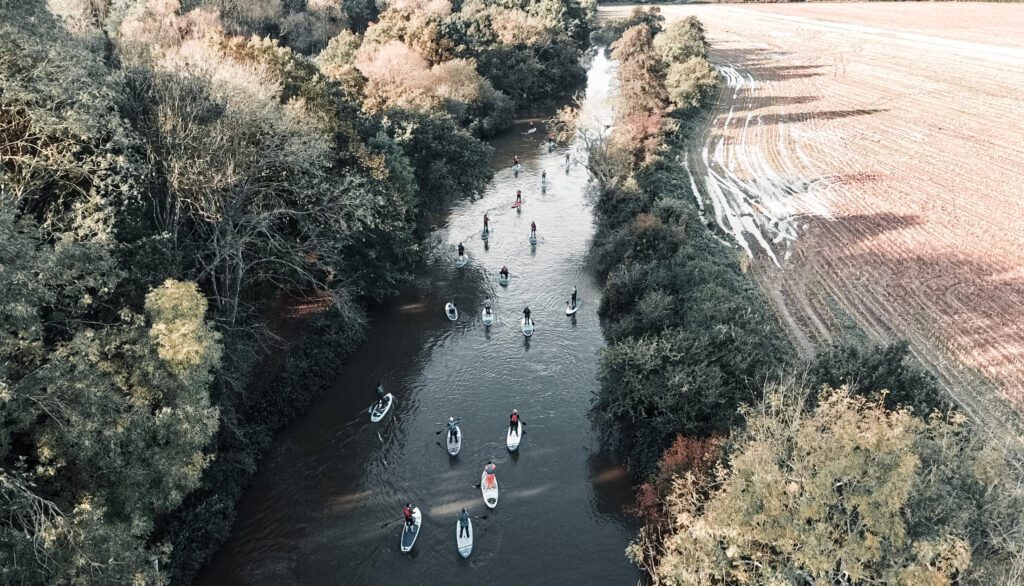Building your confidence with paddle boarding

13th July 2022
A blog written by Jo at Paddle Cabin
Being on the water on a paddleboard is just the most incredible feeling. The boost it gives you to your mental health, the benefits of blue therapy, the connection with nature – there are so many reasons why it’s the fastest growing watersport in the UK and why more and more people are buying a board and making paddleboarding their new hobby over the last couple of years. What I love about paddleboarding is that it is a low impact way of exercising, and how it is so accessible to everyone. You don’t have to be sporty, you don’t need a lot of training to go where you want to go on the water, and it’s an affordable hobby once you have bought your board.
We love that anyone can jump on a board and get paddling, but with the accessibility of paddleboarding comes some things to be mindful of. If you are feeling nervous about paddling, that is perfectly normal. Paddleboarding is still a watersport and water can have its dangers. We want you to feel empowered to know what to do in case of an emergency and help build your confidence out on the water and make informed decisions.
So, you have bought your bought and want to launch into your new hobby…. What do you need to think about?

Let’s talk about water safety…
- Make sure you practice getting back on your board (self rescues) in case you fall in by yourself (and you will, we all do, it means you are learning!). There are a number of techniques to get back on your board, so if you don’t find it easy or are nervous about it, book in for a lesson and your instructor will find a way that works for you.
- Wear a personal floatation device (PFD) like a body buoyancy aid (50 Newton) or an airbelt that goes around your waist when you paddle. It is like wearing a seat belt in your car, you don’t expect to need it, but you wear it just in case.
- Make sure you wear your leash, as this attaches you to another buoyancy aid – your board! And attach your leash to a quick release waist belt that enables you to free yourself from your board more easily than from the ankle in case of an emergency. For less than £20, it is worth every penny. And it is especially important on moving water like a river where there are more branches and hazards to tangle around your leash.
- Always tell someone where you are going, when you will be back and take a phone with full battery in a waterproof case just in case. Apps like Paddle Logger and Geo SUP App can make this super easy to log your paddles.
- Dress for the water temperature not the air temperature. Cold water shock can hit anyone if you fall in, so minimise this risk by dressing appropriately. Wick dry clothes are great when the water is warmed up for a couple of months in the height of summer, and neoprene is your new best friend for the rest of the year. Check out our clothing blog
- The most valuable thing you can do is to have a lesson to learn how to forward paddle and turn efficiently. Just one session to get your started can help you to paddle for longer, stop getting foot cramp, start to move around the board, not get so tired paddling in wind and help you control your board better. This will make your paddling more enjoyable and can open your eyes to the possibilities of where your paddle life can take you.

Get familiar with your environment…
- Always check the winds before you go and learn what wind speed takes you out of your comfort zone. As a rule of thumb, when you are new to the sport, I rarely go out over Force 3 or 4 winds but learn your local spots, which ones are more sheltered from the wind, and what different wind directions feel like on the water. There are lots of accurate apps like Windfinder, Windy and XC Weather, that can help you plan.
- If you are paddling on a river or the sea, consider the flow of the water. Be aware of the recent rainfall and storms and how this may affect your local spot. River flow and tides can be very strong so do not paddle unless you think it is safe. It is always best to paddle against the toughest conditions on your way out at the start of your paddle (against the flow and/or wind) so you know you can get always get back if you are then turning around. Do some research before paddling on the sea, ask someone local and do a coastal paddling and planning course to get you started. As a rule, paddling one hour either side of high or low tide is when the tide is slackest. Always check the tide times and water depth online to help you plan.
- The beauty of SUP is discovering amazing paddle boarding spots but you do need a waterways license to paddle on rivers and canals. You can buy an annual membership that cover most waterways, but not all. This helpful guideexplains more, but you can be fined if you paddle without a licence. Your fee goes towards maintaining and protecting our waterways so it’s all for your own enjoyment really. Have a read of our best spots to SUP in Kent.
- Know where you are paddling. If you are paddling somewhere new, ask someone local about the winds, conditions, any hazards that you need to be aware of or find someone local to go with. If you are on a river or canal, follow the ‘river right’ rule and pass other water traffic on the right and learn how to portage to manoeuvre round a lock. Basically, use the canoe jetty, pull your board out, carry everything around the lock and get back on the water on the other side.
- Take only photos (and litter out the water) and leave only ripples. As more paddlers join the paddle way of life, we all aim to promote an inclusive and friendly culture that is welcoming of people learning, respectful to fellow water users and to the environment.

And lastly, boards and all the gear aren’t cheap to buy so it’s worth spending time to look after it.
Wash your board and equipment down regularly with water or an eco-product (I love Supscrub) and always dry and store at room temperature. This not only helps look after your board but washing your board stops you carrying invasive species, unknown seeds, algae and bacteria to different waterbodies and unbalancing fragile ecosystems as you explore.
So I hope that has given you a bit more confidence to get yourself set up and comfortable with your new hobby. Wishing you very happy paddles out with your board this summer and some incredible SUP adventures. And don’t ever be afraid to ask for help, there is no such thing as a stupid question – just get in touch at hello@paddlecabin.co.uk, we were all learning once and we would love to help you meet your goals!
Popular articles
Walking the Pilgrims Way
Experience the beauty of walking across the Kent Downs NL through the…
Pumpkin Picking in Kent 2024
Get ready for pumpkin picking season and head out with loved ones…
Explore Kent’s Scenic Walks by Train
Discover Kent's hidden gems hassle-free by train, where you can start walking…
